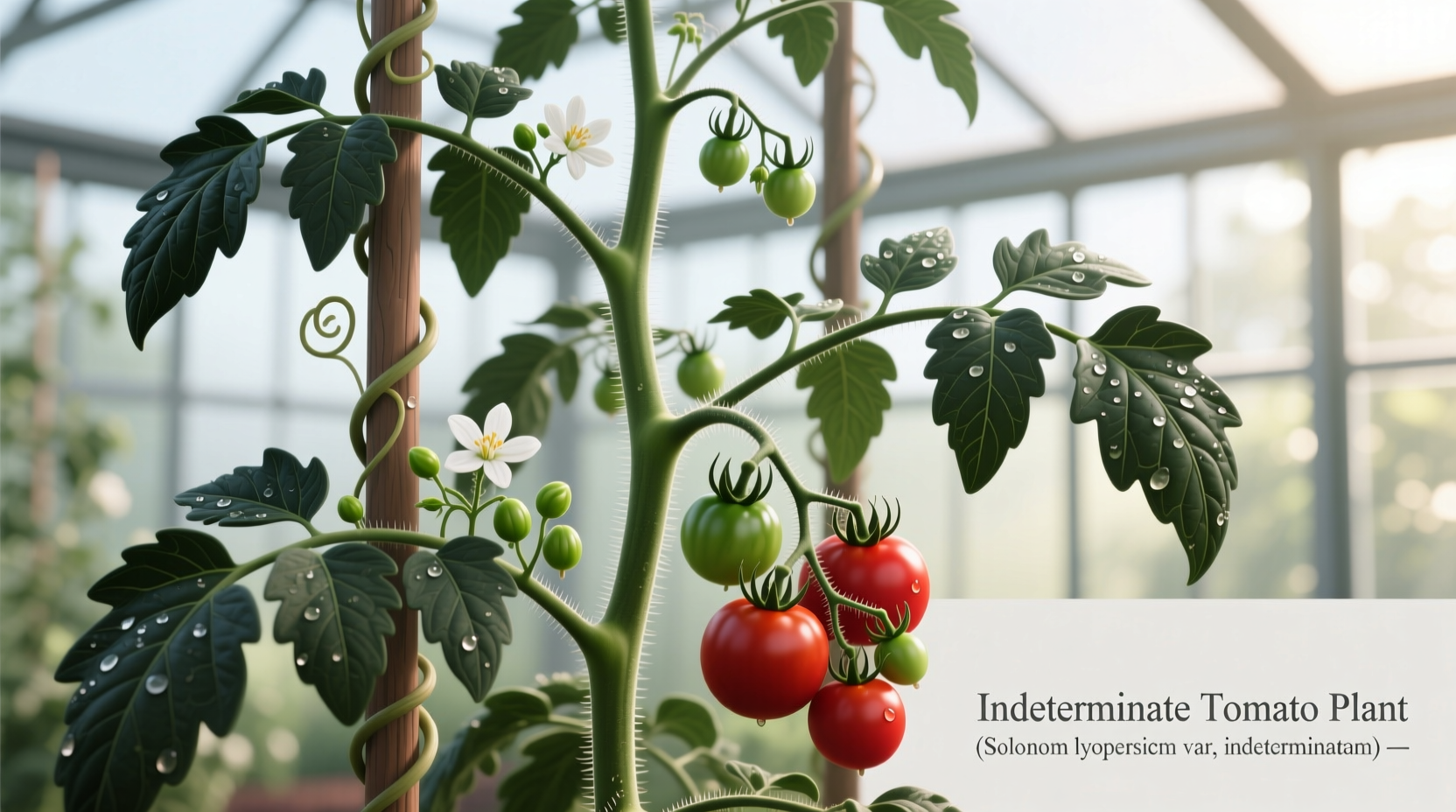Understanding Tomato Growth Habits: Why It Matters for Your Garden
When planning your vegetable garden, understanding the fundamental difference between tomato growth habits is crucial for success. Indeterminate tomato varieties represent one of two primary growth patterns, and choosing the right type can dramatically impact your harvest timeline, garden space requirements, and overall gardening experience.
Core Characteristics of Indeterminate Tomato Plants
Indeterminate tomato plants behave like perennial vines in their native habitats, continuing to grow vertically as long as conditions remain favorable. These plants develop a single main stem with side branches that continually produce new flowers and fruit sets. Rather than reaching a predetermined height and stopping, they'll keep growing until environmental factors—typically cold weather—end their production cycle.
Gardeners often appreciate indeterminate varieties for their extended harvest period, which can last 2-3 months compared to the concentrated 2-3 week harvest of determinate types. This continuous production makes them particularly valuable for fresh eating throughout summer and fall, though they require more maintenance and space.
| Feature | Indeterminate Tomatoes | Determinate Tomatoes |
|---|---|---|
| Growth Habit | Vining, continuous growth | Bush, stops at predetermined height |
| Height Range | 6-12 feet (requires staking) | 3-4 feet (minimal support) |
| Harvest Pattern | Continuous throughout season | Single concentrated harvest |
| Ideal For | Fresh eating, extended harvest | Canning, sauces, space-limited gardens |
| Common Varieties | Beefsteak, Brandywine, most heirlooms | Roma, Celebrity, Rutgers |
Practical Implications for Garden Planning
When incorporating indeterminate varieties into your garden design, spatial considerations become paramount. University extension research shows these plants require significantly more vertical space than determinate types, with recommended spacing of 18-24 inches between plants and 3-4 feet between rows to ensure proper air circulation and disease prevention.
The continuous growth pattern creates specific support requirements. Unlike determinate varieties that can often manage with simple cages, indeterminate tomatoes need robust support systems that accommodate their height. The Cornell University Cooperative Extension recommends using the Florida weave technique or sturdy trellis systems that can be extended as plants grow taller throughout the season.

Top Indeterminate Varieties for Home Gardeners
While most heirloom tomatoes are naturally indeterminate, modern breeding has expanded options significantly. For gardeners seeking disease resistance without sacrificing flavor, varieties like 'Sungold' (cherry), 'Big Beef,' and 'Mountain Merit' offer excellent performance. Heirloom enthusiasts often favor 'Brandywine' for its exceptional flavor, though it requires careful attention to disease management.
According to agricultural research from the University of California's Division of Agriculture and Natural Resources, indeterminate varieties generally outperform determinate types in extended growing seasons, producing 20-30% more total fruit weight over the course of a typical 120-day season. This productivity advantage comes with the trade-off of requiring more labor for pruning and support maintenance.
Essential Growing Techniques for Success
Pruning represents one of the most critical practices for maximizing indeterminate tomato production. Removing suckers (the shoots that form between the main stem and branches) directs the plant's energy toward fruit production rather than excessive foliage. Most experts recommend the single-stem pruning method for indeterminate varieties, which involves removing all suckers to maintain one main vertical stem.
Water management requires special attention with these vigorous growers. Consistent moisture is crucial to prevent blossom end rot and fruit cracking. The Texas A&M AgriLife Extension Service notes that indeterminate varieties typically require 1.5-2 inches of water per week, with increased amounts during fruit set and peak summer heat. Drip irrigation systems work particularly well for maintaining consistent soil moisture without wetting foliage.
Common Challenges and Solutions
One frequent challenge with indeterminate tomatoes is managing their relentless growth. As plants reach 6-8 feet tall, harvesting fruit at the top becomes difficult. Consider using step ladders designed for garden use or training plants horizontally along overhead trellises to bring fruit within easy reach.
Disease management presents another significant consideration. The extended growing season means plants remain vulnerable to soil-borne diseases like fusarium wilt and verticillium wilt for longer periods. Implementing crop rotation (avoiding planting tomatoes in the same spot more than once every 3-4 years) and using disease-resistant varieties significantly reduces these risks.
Harvesting and Enjoying Your Indeterminate Tomatoes
Unlike determinate varieties that often ripen all fruit simultaneously, indeterminate tomatoes provide a steady stream of ripe fruit. Check plants every 2-3 days during peak season, as tomatoes typically ripen from the bottom clusters upward. For the best flavor, harvest when fruits show full color development but remain slightly firm.
One advantage of continuous production is the ability to extend your harvest into fall. As temperatures cool in late summer, indeterminate plants often produce exceptionally flavorful fruit. In regions with mild falls, you might continue harvesting until the first hard frost. Consider using frost protection methods like row covers to extend the season even further.











 浙公网安备
33010002000092号
浙公网安备
33010002000092号 浙B2-20120091-4
浙B2-20120091-4